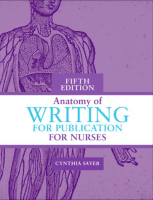What an exciting time in the history of the American Nurses Association (ANA)—to be providing an exciting new journal, American Nurse Today, to our members! The journal will present practical contemporary information for your use, based on sound knowledge, research, and evidence-based practice—whether you work in a direct care role, community role, educator role, or any other role or setting. We hope you will use the information in this journal to advance your professional practice and will share the good news of its debut with other nurses.
Speaking of history, I believe it’s important for you to know about ANA’s role in the history of nursing in the United States, just as this inaugural issue of American Nurse Today is history-making. One article in this issue deals with effective patient communication and the nurse’s ethical commitment. One of the earliest issues facing the nurses who founded ANA was to ensure that the association would be a leader in establishing a code of ethics and elevating the standards of nursing education, which in turn would elevate the standard of nursing practice. The founders also sought to promote and advance the interests of nurses and nursing as essential to the health of the nation’s population. These goals are still the foundation of ANA’s mission today. While we may all be familiar with or belong to other associations, no other organization has the broadest interests of nurses and nursing as its core purpose.
The current edition of ANA’s Code of Ethics for Nurses with Interpretative Statements has its roots in Florence Nightingale’s Pledge from 1893. For more than a century, ANA has taken its role as the author and steward of the ANA’s Code of Ethics very seriously. Various editions have evolved from the statements first made in 1896 until the most recent version published in 2001. With each new edition, ANA and the profession responded to evolving needs. Nurses across the country contributed to the latest amendment to the Code. Every day, nurses are faced with dilemmas that can be addressed, and subsequent actions guided, by the tenets stated in the Code. Some have even suggested it may already be time to begin the next revision, based on the changing world in which we live!
In the late 1950s, to fulfill the profession’s obligation to society to control the practice of nursing, ANA acted to secure universal mandatory licensure for the practice of professional nursing as a way to protect the public and nurses from incompetent and unsafe practitioners. This activity also provided the framework to have the association’s definitions of functions, standards, and qualifications for nursing accepted as the legal standard. While the legal standard has been viewed as the minimum standard of competency, ANA and its members have long been involved with setting the bar higher and establishing the norms and scope of practice, which are enforced by the professional association. As specialty practice has evolved, specific standards for each area have been developed. ANA and specialty organizations collaborate on most of the scopes of practice and practice standards with which we are familiar today.
In the late 1970s and early 1980s, it was determined that the profession should be an even stronger advocate and educate the public on what nursing is. The foundational work of the Code, the ever-evolving scopes and standards, and the definition of nursing led ANA’s nursing leaders to develop and publish “Nursing: A Social Policy Statement” (otherwise known as the nursing profession’s contract with society) so the public can be informed about the profession of nursing.
Why do I recount this history? It has always been ANA’s purpose to advance the nursing profession and advocate for nurses in providing the safest and highest quality of care for patients. Through this new journal, ANA seeks to do just that. Over its 110 years, ANA has worked for the individual and collective well-being of all nurses.
Despite challenges, whether intentional or unintentional, ANA has always remained focused on our mission. American Nurse Today will provide readers with an accurate representation of the facts and issues for clinical or nonclinical topics.
We hope this journal will serve as a vehicle that provides the most up-to-date and sound knowledge that your nursing colleagues can provide. Our vision is to assist you to be the best nurse you can be—and want to be—through the ever-expanding body of information available to us all.
I invite you to enjoy and appreciate the collegiality that can be gained from your regular reading of American Nurse Today.
Rebecca M. Patton, MSN, RN, CNOR
President
American Nurses Association

















